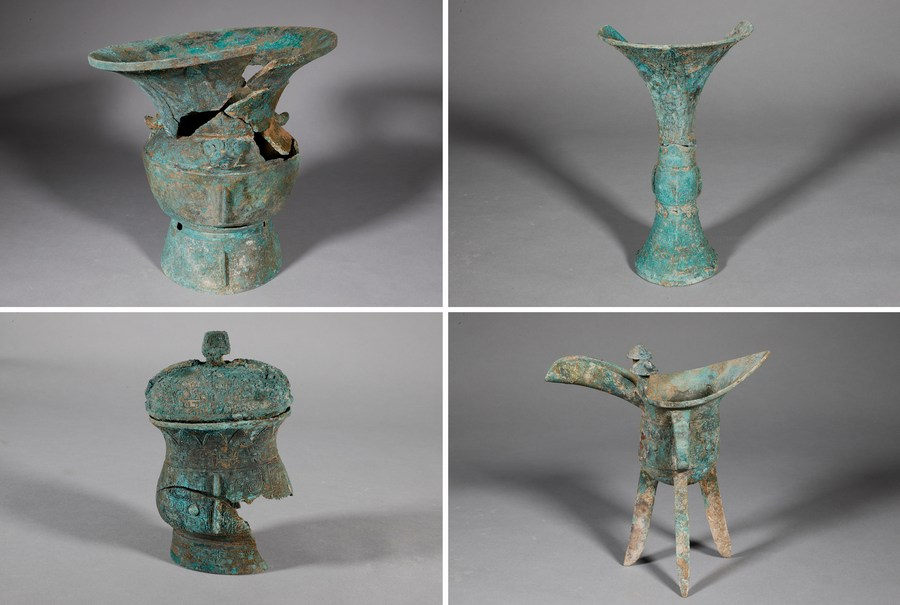

This combo photo shows bronze wares unearthed from the royal tomb area and surrounding relics in the Yin
China released a list of the top 10 archaeological findings of 2022 on Tuesday.
On the list is a site dating back to the Paleolithic period, which includes ruins of ancient humans, animals and stoneware excavated in central China's Hubei Province. At this site, archaeologists have unearthed a fossilized skull, which is regarded as the most intact Homo erectus specimen of its age found in inland Eurasia.
The list also includes an ancient hominid site discovered in Zhaojiaxuyao Village in east China's Shandong Province. The discovery has helped fill the gap in the study of prehistoric human ruins in the region, providing key evidence about the significant transition from the Palaeolithic Age to the Neolithic Age in northern China.
The Bicun relics site, unearthed in the city of Lyuliang in North China's Shanxi Province, was a stone city settlement with inner and outer walls dating back to around 2000 B.C. The findings showed the cultural integration between the north and the central plain area.
The ruins of an ancient city found at the Erlitou relics site in central China's Henan Province featured a grid of streets, a palace complex, workshops and royal tombs. Archaeologists said the study of the ruins offers a valuable reference for studying the layout of other ancient cities from the pre-Qin period (before 221 B.C.).
Also on the list is a new finding at the Yin Ruins, remnants of the capital of the late Shang Dynasty (1600-1046 B.C.), in the suburbs of Anyang in Henan. Moats circling a royal mausoleum were unearthed, and are expected to advance the research into the mausoleum system in the Shang Dynasty, as well as the dynasty's culture and history.
More relics were excavated at the Xitou relics site in the city of Xianyang in northwest China's Shaanxi Province. The relics, such as buildings and granaries, serve as fresh evidence for studying the functions and structures of the cities from the Shang and Zhou Dynasties (1600 B.C.-256 B.C.).
Archaeologists have unearthed more than 4,000 pieces or sets of relics, mainly household utensils and ornaments, from 2,192 tombs at the Dasongshan tomb site in Guizhou. The large-scale tomb complex has shed light on the life, trade and faith of the ancient ethnic minorities in southwest China.
More than 16,300 cultural relics have been uncovered at the Gucheng temple site in northeastern Jilin Province, which contains two ancient Buddhist temples. The archaeological excavation is vital for the study of Buddhist culture from the Southern and Northern Dynasties (420-589) to the Tang Dynasty (618-907).
The Zhouqiao Bridge and the nearby Bianhe River relics site in Henan Province have shed light on the evolution of the ancient Chinese city of Kaifeng over a period of some 1,000 years. Zhouqiao Bridge was built across the Grand Canal, a vast waterway connected the northern and southern parts of China, between 780 and 783 during the Tang Dynasty. The bridge was a landmark structure in the central axis of Kaifeng.
An ancient port site in the city of Wenzhou, Zhejiang Province, includes the remains of wharves, sunken ships and a huge number of porcelain relics dating back to the Song and Yuan Dynasties (960-1368). The findings prove that Wenzhou port was an important site for maritime trade since the Song and Yuan Dynasties and played a vital role in the maritime Silk Road.
